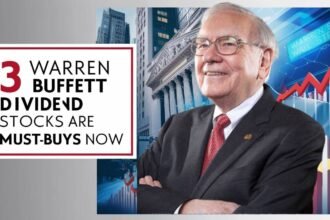The trade-off between high yield and consistent distributions is a common one for dividend investors. Integrating Enterprise Products Partners with Enbridge appears to be a win-win situation. But in this uncertain economy, how secure are their massive 7%+ yields?
Earning the esteemed Dividend Aristocrat title, Enterprise and Enbridge have increased dividends for more than 25 consecutive years.
This outstanding performance is a result of the resilience of their diverse business strategies in the face of volatility in the commodity markets. But there are sustainability risks with high payout ratios and a lot of debt.
Let’s take a look at the dividend safety and growth potential of both equities to see if income investors should lock in their high yields.
Enterprise’s Diversified Assets Support Generous Payouts
A vast system of pipelines, processing plants, storage facilities, and export terminals is operated by Enterprise Products Partners, a top provider of midstream energy infrastructure in North America.
Regardless of fluctuations in the price of oil and gas, Enterprise can continue to benefit from energy transportation thanks to its wide footprint, which provides resilience.
Over the years, Enterprise’s financial performance has been driven by consistent volume growth. Despite persistent volatility in the energy sector, its revenue increased from $36.5 billion in 2018 to $58.1 billion in 2022.
The company’s profit per share increased by 31%, from $1.91 to $2.50. With strong cash flow creation, Enterprise has increased dividends for 25 consecutive years, culminating in a 5.3% increase in 2022.
But compared to the S&P 500’s blistering 23% increase so far this year, Enterprise stock has only up 8.5%. Income investors looking at its 7.5% yield may find shares at a discount.
Healthy Cash Flows Support Further Payout Growth
Enterprise maintained a consistent distributable cash flow of $1.9 billion in Q3 2022 compared to the previous year. Adjusted free cash flow for the quarter came to $1.2 billion as well. The strain on the balance sheet caused by the high debt-to-equity ratio of 1.07 can be alleviated through the ongoing deleveraging activities.
Even though Enterprise distributes a substantial 75% of its earnings as dividends, there is still potential for further increases to its payout ratio. In 2024, greater distributions can be supported by sales and earnings per share growing by 5-6%, according to consensus predictions.
Enterprise has a “Strong Buy” recommendation from analysts due to its profitable diversified approach and careful deployment of capital. Shares are still attractively priced at $31.57 on average, which represents a 20% upside, especially considering the safe 7.5% yield.
Enbridge’s Cash Engine Funds Big Dividend Commitments
The Canadian energy infrastructure behemoth Enbridge has a vast footprint across North America with its pipelines, storage facilities, and utility assets.
Energy transportation volumes, rather than direct commodity price exposure, are Enbridge’s and Enterprise’s primary sources of revenue. This ensures that earnings and cash production can sustain dividend growth for 29 years in a row.
With a 3% year-over-year growth, Enbridge’s adjusted EBITDA reached $3.8 billion in the third quarter of 2022. The company’s financial soundness was confirmed as distributable cash flow increased by 3% to $2.5 billion. Consistent with their expectation of steady cash flow, management has maintained their full-year outlook for EBITDA and DCF per share.
The stock of Enbridge, meanwhile, has fallen 9.4 percent in 2022 due to widespread market instability. Its 7.4% dividend yield is becoming more appealing to income investors because to its apparent undervaluation.
Strategic Expansion Initiatives Carry Execution Risks
Among Enbridge’s more than $17 billion in planned capital expenditures for the years 2022–2024 is the $14 billion purchase of three gas utilities in the United States. Improving infrastructure assets should enhance cash flow in the long run, but taking on a lot of debt might hurt profits in the short run.
With a dividend payout of more than 120% of profits, Enbridge has a heavier debt load than Enterprise. Despite strong cash flow, deleveraging is difficult due to the extremely high debt-to-equity ratio of 1.19. Dividend promises are at risk in the event of bungles in capital allocation or integration.
Shares of Enbridge are still rated a “Moderate Buy” by analysts because of the company’s transparent growth potential and consistent execution. Based on their average price objective of $40.71, which suggests a 15% upside, the company looks inexpensive when compared to its 7.4% yield.
The Verdict: Lock In These Yields or Wait for Higher Margins of Safety?
Enterprise Products and Enbridge are two income investment firms that have consistently provided solid business models and substantial dividend yields to their shareholders. Another indicator of management’s dedication to shareholders is their payout record, which spans over 20 years.
Even though they have above-average yields, they aren’t as safe as Dividend Aristocrats due to inflated payout ratios and debt. Cash flows and the progress of deleveraging the balance sheet should be actively monitored by investors moving forward.
Enterprise Partners and Enbridge are set to produce total returns in the double digits at today’s values when compared to historical norms. Investors in income can probably lock in their payouts of 7% or more with an acceptable amount of risk.
However, a larger buffer zone might materialize in the event that macroeconomic uncertainty continues. If the market experiences instability again in the latter half of 2023, patient dividend stock buyers may have an opportunity to purchase these dependable high yields at discounted rates.










